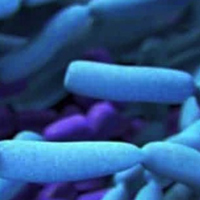Multi-locus sequence typing and virulence profile in Bacillus cereus sensu lato strains isolated from dairy products

Accepted: 28 August 2019
HTML: 11
All claims expressed in this article are solely those of the authors and do not necessarily represent those of their affiliated organizations, or those of the publisher, the editors and the reviewers. Any product that may be evaluated in this article or claim that may be made by its manufacturer is not guaranteed or endorsed by the publisher.
Authors
Members of Bacillus cereus group are important food contaminants and they are of relevant interest in food safety and public heath due to their ability to cause two distinct forms of food poisoning, emetic and diarrhoeal syndrome. In the present study, 90 strains of B. cereus isolated from dairy products, have been typed using Multilocus Sequence Typing (MLST) analysis and investigated for the occurrence of 10 enterotoxigenic genes (hblA, hblC, hblD, nheA, nheB, nheC, cytK, entFM, entS and bceT) and one emetogenic gene (ces), to determine their genetic diversity. A total of 58 sequence types were identified and among these 17 were signalled as new profiles. Among the virulence genes, the majority of our strains carried the entS (92%), entFM (86%), nhe (82%) and cytK (72%) genes. All remaining genes were identified in at least one strain with different prevalence, stressing the genetic diversity, how even the different grade of pathogenicity of B. cereus isolated from dairy products.
How to Cite
PAGEPress has chosen to apply the Creative Commons Attribution NonCommercial 4.0 International License (CC BY-NC 4.0) to all manuscripts to be published.

 https://doi.org/10.4081/ijfs.2020.8401
https://doi.org/10.4081/ijfs.2020.8401



